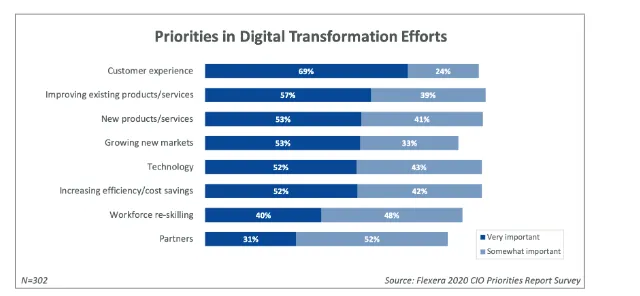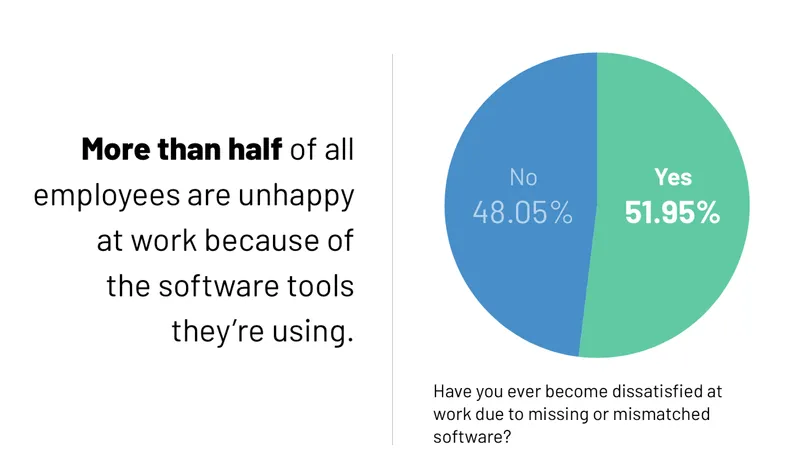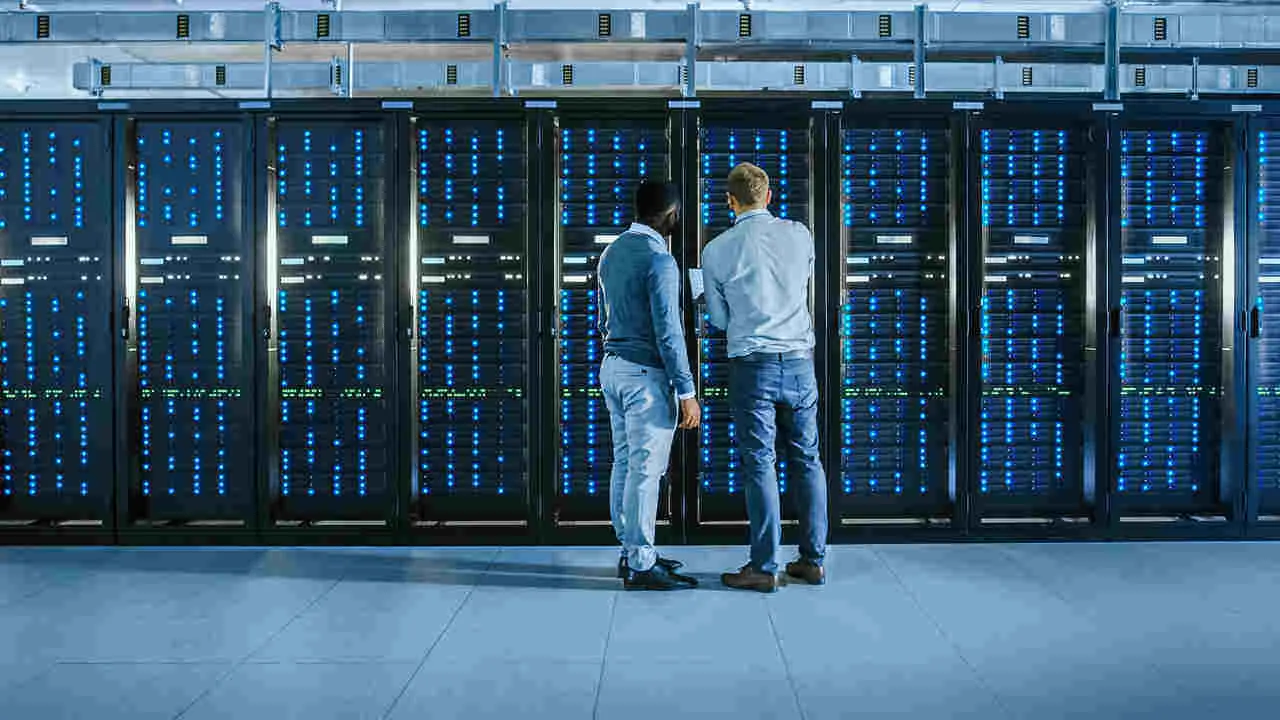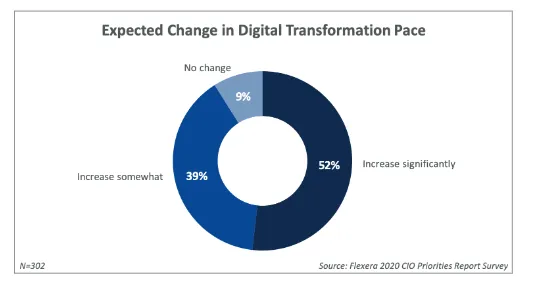When Legacy Becomes Loss: The True Costs of Legacy Systems

When you think of the word “legacy”, what comes to mind? And when someone leaves behind a great legacy, what does that mean to you? The word legacy is generally associated with something positive: Someone leaves something good behind, such as a retiring CEO who will leave a legacy of honesty, goodness, and integrity.
But when it comes to computing and the world of enterprise, the word legacy is typically associated with problems and challenges more than anything else. The fact that the first use of the term “legacy” in computer systems appeared in the 1970s should be evidence enough that legacy systems belong to the past, even if they’re still in use today.
And this begs the question: Why do some companies still use legacy systems, especially with the rise of cloud computing and the availability (and affordability) of thousands of highly useful SaaS applications?
In this article, we’ll explore this very question, discuss the problems and costs associated with legacy systems, and take a look at some of the most important reasons why you need to modernize or replace your legacy systems as soon as possible.
Table of Contents
The 9 True Costs of Legacy Systems
The Hidden Costs Due to a Lack of Performance and Speed
I don’t think I need to say much about the impact slow software has on productivity and profitability. Legacy systems may be stable, but their large, monolithic structures have numerous interconnected pieces, meaning that one application will affect other systems, ultimately affecting productivity and preventing businesses from moving at the pace required to keep up with the competition these days.
A lack of performance, on the whole, is one of the major challenges of legacy systems, and there are a number of aspects that contribute to this overall lack of performance. Listed below are seven factors that affect performance and rack up those costs!
Lack of Mobile Capability
Mobile devices play a huge role in digital transformation. Being able to access apps from anywhere at any time increases both productivity and operational efficiencies. In fact, enterprise companies that aren’t leveraging the powerful capabilities of mobile devices will find themselves lagging behind the competition.
Legacy software, for the most part, can’t be accessed from any device other than office computers. This means that employees always need to be in the office to work, which racks up costs in terms of lost productivity as well as travel expenses.
A Poor Customer Experience
In 2015, planes were grounded for several hours at Paris’ Orly airport after a computer running Windows 3.1 (an OS that’s almost 30 years old) crashed in bad weather. I won’t go into the specifics, but you can just imagine the repercussions of grounded planes at a very busy airport. Not only was this a major setback for the airport, but airlines were affected too – any time on the ground equals money and dissatisfied customers.
We’ve mentioned it many times before on our blog that digital transformation is all about people. It’s absolutely critical that businesses these days provide their customers with the best experience possible and seek to continuously optimize and improve it. And legacy software makes this incredibly difficult to do.
Think about customers today and the technology they’re using – they’re on their mobile phones and the internet all the time. They can order just about anything online. Chatbots on these sites are available 24/7 should customers need help with anything. If you’re in the B2B sector and deal with customers daily, you’ll be pushed out of the competition if you’re using legacy apps that prevent you from using newer apps or providing better customer service and support.
To highlight how critical the customer experience is to business success, the Flexera 2020 CIO Priorities Report (based on responses from 302 CIOs and senior IT executives from around the world) indicates that the customer experience is the main driver of digital transformation efforts. 69% of respondents rate it as very important with only 36% considering themselves as highly mature in this area.

Source: Flexera 2020 CIO Priorities Report
A Negative Impact on the Employee Experience
The employee experience affects the customer experience. Lackluster (or, in this case, legacy) software directly impacts employee performance, and this is not something any business can afford these days. Not only do legacy systems slow down productivity (therefore making you slower than your competitors), they also affect the way both customers and employees view your company.
Firstly, training employees on legacy software will be a tedious and time-consuming process. It will also indicate to employees that your company isn’t willing to embrace change. By not having a comprehensive digital strategy and adopting newer technology, you’ll be making your employees’ jobs much more difficult.
As Lauren Decker in her post on the State of Software Happiness Report 2019 puts it,
Software touches everything we do, particularly at work. But because software is more integrated into our lives than ever, it is also taking a larger role in our happiness as employees and humans. The right software can help us create and scale businesses … The wrong software can cause us to waste time and grow frustrated – even to the point of leaving a company.
In the US alone, the average cost to hire a new employee lies between $4000 and $8000 dollars. In the State of Software Report, which was compiled by G2, stats show that more than 50% of employees are unhappy at work due to the software tools they’re using, and almost 25% of respondents said that they’ve considered leaving their jobs because of the software they’re using in the workplace.

At the end of the day, both customers and employees want speed and efficiency. If employees can’t get their work done without frustration and if customers don’t have access to quick service, they’ll simply move elsewhere.
The Negative Impact on Brand Image
As mentioned above, when we talk about costs, we’re not just focusing on the financial side of things. Costs are also related to reputational damage, employee turnover, and the inability to find new talent. While all these aspects can be calculated financially, these costs also have a human and emotional quality to them.
For example, if a security breach happens, the reputational damage done will take years to repair and will have a significant impact on the public’s perception of your brand. Customers will no longer trust your services and will take their business elsewhere, which, in turn, may lead to you laying off employees.
Poor User Experience
Enterprise applications are often highly complex and therefore come with poor user experience. And with a poor UX, employees simply struggle to use the software properly. This, in turn, prevents them from achieving particular goals, and this ties back to poor employee experience, which, in turn, impacts the customer experience.
Here, it’s also important to mention compatibility issues that can easily drive customers away. Legacy systems are only capable of supporting certain formats up to a certain point. Then, when these formats become outdated, your company will be stuck using older formats that your customers aren’t using.
The Lack of Scalability
Software should adapt to a business’s growth, and this isn’t possible with monolithic systems and legacy software.
Your business, in such a competitive world, needs to be able to scale – and the technology you’ve implemented should be able to scale with your business. If your software isn’t dynamic and can’t change and scale with your company, you will experience some major setbacks.
Today, business success centers on how well companies adapt to change. Legacy IT strategies, in general, are simply not prepared for change. The COVID-19 pandemic is an excellent example of unprecedented change and how companies need to leverage SaaS applications in order to facilitate remote work.
Security Threats
When it comes to security, legacy software is simply no longer secure for a number of reasons:
- Legacy software is, in many cases, no longer supported by the manufacturer.
- A lack of attention to and updates of legacy systems put data at risk.
- There is a lack of regular maintenance and support as only a handful of developers are able to work with the legacy software.
- Legacy IT strategies don’t include the “lean IT” concept.
- Certain vulnerabilities in legacy systems aren’t always easy to fix.
IBM’s 2019 Cost of a Data Breach Report shows the devastating financial effects and reputational damage caused by security breaches. According to results from the study, the average cost of a data breach is a staggering USD 3.92 million.
Today, security is based very much on the lean IT concept, which allows for continuous change to deal with new threats. With legacy systems, their age is what makes them vulnerable to attacks, and if there is a fix or solution, it normally takes a while to implement such a fix.
The Not-So-Hidden Costs of Legacy Systems
High Cost of Ownership
If you’re hosting your software on-premise, you’ll have a high cost of ownership because of administrative expenses (see point below on maintenance costs). And now that we have access to the likes of Microsoft Azure and Amazon Web Services, your company no longer needs to own a server to run processes.
In The True Cost of Ownership in a Legacy Infrastructure by ActualTech Media, the author talks about non-trivial maintenance with legacy systems, which refers to highly-paid IT practitioners having to “burn hours upon hours on implementation before the system (or upgrade) is even usable”. This high-level effort is, naturally, no longer acceptable. Newer systems are much more agile and changes happen quickly with a simple click of the mouse.
Always remember that every hour will add to the TCO of the system, and the older a system the greater the maintenance cost.
And regarding compliance, industry regulations are changing constantly, and it’s not easy keeping legacy systems compliant. Add to this the risk of noncompliance, and fines and penalties will soon cause your TCO to soar.
Support and Maintenance Costs
Despite the challenges of legacy software, there are still many enterprise companies around the world that operate on legacy systems because of their widespread use. A survey conducted by Spiceworks on OS Adoption Trends found that over 50% of businesses are still running at least one instance of Windows XP even though support for the OS ended in 2014.
In 2011, a Unisys MeriTalk study (based on responses from senior IT managers in the US federal agencies) found that agencies were spending close to an estimated $36 billion to maintain and support legacy applications. And according to research in the journal of Applied Computing and Informatics, the financial services industry spends a huge portion of their IT budget on maintaining legacy systems. Stats reveal that 75% of the IT budgets of banks and insurance companies are dedicated to maintaining existing systems.
While many CIOs may believe that they can still maintain their legacy systems, they are overlooking the fact that their development teams need to maintain old code bases. This makes hiring new developers challenging: Firstly, new developers don’t necessarily want to work with outdated technology, and secondly, training new developers on legacy software is tedious, time-consuming, and counterproductive.
Adding to this, if your legacy software is running only on antiquated hardware, it’s more than likely that the costs of maintaining this system are greater than the costs of replacing the software and hardware.

So, Why Do Enterprises Still Use Legacy Systems?
Despite the myriad costs incurred by legacy systems and the challenges they present, why do enterprises still use legacy systems? Why are they so hesitant to modernize?
One of the main reasons has to do with the fear of or resistance to change. Digital transformation requires a significant change in mentality and ways of doing things, and as creatures of comfort, not all of us are willing to explore such new ways of doing things. And more often than not, it’s the employees who are hesitant to adopt new technologies and commit to new processes and software.
Companies may also opt to keep older systems in place due to a lack of resources. They might be concerned about a lack of ROI when implementing new software. Vendor lock-in may also be an issue. And if employees are already resistant to the idea of new systems, how can companies guarantee that there will be any ROI if they try something new?
Sticking with legacy systems also comes down to a matter of complacency. We all know the adage “if it ain’t broke, why fix it”, and if a system is working satisfactorily, then why change it? If people are already familiar with using such systems, why shake up their confidence and slow down productivity by introducing new software and then having to train them on how to use it?
The risk of failure is also another motivating factor in staying with legacy systems. For many companies, particularly in the financial services industry, they simply can’t risk losing data.
Lastly, not willing to part with legacy systems could even be related to nostalgia: As an article from the Forbes Technology Council states, “For many entrepreneurs, their businesses were built on what would now be considered legacy hardware and software. It can be tough to part with it … if an entrepreneur is reluctant to change the way something has always been done.”
Whatever the reason may be, we are living in 2020, and businesses need to move forward. Change happens and is happening perhaps even faster than ever: The current COVID-19 pandemic is definitely an example of this, with companies having very little time to switch to remote work and implement new processes, structures, and software.
Whichever way you look at it, staying with legacy systems or making a big change both require a large investment, but you must consider just how practical it is to continue investing in outdated and maybe even almost-obsolete systems.
Saying Goodbye to Outdated Systems: Why It’s Time to Invest in New Software
Today, every company is a software company. You have to think and act like a digital company. It is no longer enough to just find a solution and implement a solution. It is not a simple software solution. Rather, it is about the future of every company in digitization. – Satya Nadella, CEO Microsoft
Nowadays, it’s all about cloud computing. By renting public cloud software, companies are able to gain agility and increase speed to market. In fact, more and more CIOs are opting for hybrid cloud systems by making use of both public clouds (from AWS, Microsoft Azure, Google Cloud Platform) and private clouds that run internally or are hosted off-site.
According to Charlie Li, Capgemini’s chief cloud officer, “In the early days of cloud, many organizations chose one cloud services provider to work with exclusively … Today, that approach doesn’t go far enough, and organizations are recognizing the benefits of multi-cloud, such as improved organizational flexibility, efficiency, and performance.”
In When Companies Become Prisoners of Legacy Systems – an article that appears in The Wall Street Journal – the author talks of how legacy systems “strain to support the complexity and variety of current products and services” and how “such limitations may prevent companies from surging ahead in the marketplace, introducing new products, moving into new geographies, or expanding services to customers on new platforms”.
The benefits of investing in new systems and software couldn’t be clearer. From simplifying business operations and significantly increasing speed to value to improving both the employee and customer experience, the rewards of implementing new software are tremendous.
Truth is, legacy systems can’t keep up with digital transformation needs, and they slow enterprise innovation. If they are to provide any significant value, they’ll need to be able to integrate with new technologies, such as AI, ML, and IoT.
When it comes to modernizing your legacy systems (no matter which approaches you take), any change you make will be a change for the better.
It’s time to Modernize: The Ultimate Fate of Legacy Systems
In 2017, VMware conducted a survey and found that 62% of IT leaders say that legacy systems are the biggest roadblock to multi-cloud success.
Now, don’t get me wrong: It’s not easy to modernize, replace, or rewrite legacy systems for a number of reasons. For many companies, legacy hardware and software platforms form the very foundation of their operations. But there comes a point when legacy systems no longer provide any value and simply become more of a liability than a legacy.
Whether you need to replace your legacy system with another in-house system, switch to an external provider, or continue to enhance the system, all options will require considerable investment. But when the opportunity cost of maintaining legacy tech becomes greater than the actual cost of refactoring or rewriting applications with modern architecture on next-gen systems, then it’s time to call it a day and pull the plug.
Prashant Kelker, writing for cio.com, aptly calls legacy systems, “The Achilles’ Heel of digital transformation”. There are no two ways about it: Digital technology is integral to business strategy, and implementing new software to streamline processes, improve both the customer experience and employee experience, and (importantly) enable remote work is an absolute necessity.
According to the Flexera 2020 CIO Priorities Report, 91% of CIOs surveyed expect the pace of digital transformation to increase in 2020. The same report also reveals that:
- CIOs are “planning for heavy adoption of cloud (public, private and multi-cloud)” in 2020.
- 79% of organizations plan to have moderate to heavy public cloud adoption.
- 36% of the IT budget is allocated to growth and innovation, thus supporting the shift to the cloud.

Source: Flexera 2020 CIO Priorities Report
The statistics speak for themselves: Many enterprises across the globe are looking to invest in the cloud, so if your organization is still weighed down by legacy software, it’s definitely high-time to consider modernizing your systems.
But don’t be fooled – getting rid of or modernizing your legacy systems etc. is not just about shiny new tech. Changing legacy systems also requires a change in legacy thinking. Digital transformation is a mindset, a cultural shift that needs to take place within the organization.
Remember, nothing is a silver bullet. Even the tech we use today will become legacy software in the future. As Kelker says, “business outcomes should always take priority, not systems – modern or legacy.”
Nowadays, it’s all about efficiency, profitability, and, most importantly, providing the best to employees so that they can give their best to customers.
So, the writing is on the wall: By relying too much on legacy systems, you’re actually doing more harm than good to your business.
Looking for Legacy Issues
To weed out any issues caused by legacy systems, you’ll need to conduct a complex assessment and then come up with a solid modernization strategy. Once you’ve done so, it’ll be time to take action. You’ll need to develop a bullet-proof software implementation plan and get everyone on board with it.
In our next blog post, we’ll look at the challenges of and concerns you may have when implementing new software and how you can overcome them.

